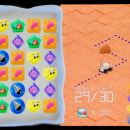Activity: ROMan Mosaic
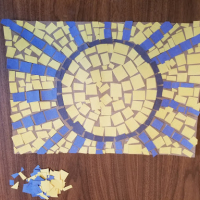
Learn about Roman mosaics and how they were made. Then, put your art-smarts to use to create your own Roman-inspired mosaic.
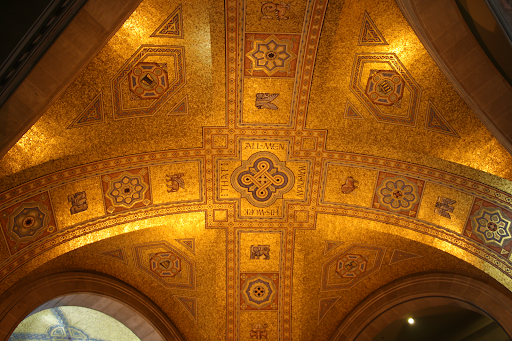 During the Roman period, between 27 BC and AD 480, many mosaics could be found in homes or public buildings throughout the Roman world. They were used for decoration on walls or floors, and they were also used to protect areas where a lot of people walked. Many of the pictures displayed in mosaics showed important historical figures, different Roman gods and goddesses, or even messages or advertisements for passers-by to read.
During the Roman period, between 27 BC and AD 480, many mosaics could be found in homes or public buildings throughout the Roman world. They were used for decoration on walls or floors, and they were also used to protect areas where a lot of people walked. Many of the pictures displayed in mosaics showed important historical figures, different Roman gods and goddesses, or even messages or advertisements for passers-by to read.
Today, mosaics are still used to decorate public spaces, such as murals at parks, or the floors or ceilings of important buildings -- including the ROM!
They are also used in the walls of homes, especially in bathrooms or kitchens, to add a backsplash or a pop of colour in a room.
Learning Goals
- Understand why Roman mosaics were made.
- Explore how mosaics were made.
- Create a Roman mosaic using historical knowledge and personal inspiration.
Background Information
 Mosaics are pictures or designs made out of many small pieces placed together to create a large image. In Roman mosaics, each piece is a small tile, usually in the shape of a cube, that is placed with many other small cubes to create a bigger pattern or design. A single tile is called a tessera. Many little tiles are called tesserae.
Mosaics are pictures or designs made out of many small pieces placed together to create a large image. In Roman mosaics, each piece is a small tile, usually in the shape of a cube, that is placed with many other small cubes to create a bigger pattern or design. A single tile is called a tessera. Many little tiles are called tesserae.
While the Romans tried to make all their tesserae in a perfect cube, some look a little more rectangular or triangular. This is because they were cutting their tesserae by hand and could not make perfect cuts every time. Here you can see a corner fragment of a mosaic. This tessera has been painted and you can make out a small face in the corner.
Tesserae were made out of many different materials. They could be made out of glass, broken bits of pottery, stone, brick, or even precious metals like gold. Most mosaics used many different coloured tesserae to make their images, using colours like red (from broken pottery), white (from brick), yellow, black, and blue (from pebbles or small stones). There are some mosaics that only use one colour in different shades to create intricate patterns.
To make a mosaic, an artist would first draw out a design, then the tesserae were placed on top. Mortar was used to hold the tesserae in place, gluing them onto the design. Once all of the pieces of the tesserae were in place, a grout-like substance was poured over the cracks and pulled away, revealing the mosaic and securing it in place.
Roman mosaics have been found all over what used to be called the Roman Republic and then the later Roman Empire. The Royal Ontario Museum has many mosaic fragments in its collection from Syria, Tunisia, Egypt, and Italy. This fragment of a floor mosaic with a picture of a lion can be found on display in the Joey and Toby Tanenbaum Gallery of Rome and the Near East at the ROM or in the online collection here.
Materials
- 4-5 different coloured sheets of construction paper
- Glue stick or white glue
- A piece of cardboard or solid coloured paper to build your mosaic on
- Scissors
- Pencil
Instructions
Step 1
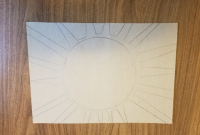
On your cardboard or coloured paper background, sketch the design for your mosaic. This could be a pretty pattern, a message, an image of something you really care about, or something else that you find beautiful.
Step 2
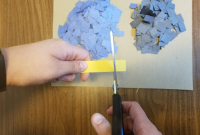
Cut your coloured pieces of paper into tesserae. Remember that the Romans tried to make their tesserae cube-shaped (or, in our case, square). Some pieces may not be perfect, and that’s okay; the Romans used irregular pieces, too. Keep the pieces small, about 1cm by 1cm.
Step 3
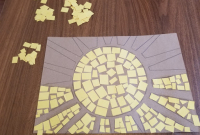
Check to see that a tessera fits where you want it to go, then glue it in place on your design. If your tesserae are too big for your design, cut away some of the paper to make smaller tiles. The Romans had to make many different chips in their tesserae before they got them to the perfect size!
Step 4
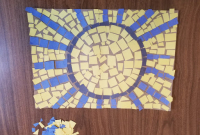
Keep gluing tesserae until you have completely filled in your design. Keep a little bit of space between each square so that the cardboard shows through. This represents the grout in a traditional mosaic.
Step 5
Share your design with us @ROMtoronto #ROMLearning!
Tips
- For our mosaic, we use different coloured papers to make the tesserae and build the design on another sheet of paper or cardboard to make our mosaic.
- Depending on the level of detail, the chosen medium for this project, and the difficulty of the mosaic, it may take more time to complete.
- Make sure that your background colour is different from all of your tesserae. This helps your mosaic design stand out.
- Always use caution when using scissors.
- If you have any broken pots, plates, or pebbles, you could create your mosaic using those items and a stronger base, like cardboard or plywood. Once the glue dries, you can fill in the spaces between them with grout from a hardware store.
- If you are using materials other than paper, make sure you have permission and help from an adult when using broken pottery, dishes, or other sharp pieces.
Follow-Up
- What were the challenges you faced when trying to make a big image out of small pieces?
- If you cut your tesserae bigger or smaller, how would that affect the picture you create?
- Do you think that making a large mosaic would be a task for one person or many people?
- What do you think having a home decorated with mosaics says about the family who owned it?
- Why would someone choose to create a mosaic instead of creating the same design in a painting?
- What kind of messages do you think the ancient Romans would put in a mosaic, and why?
Teacher Reflection:
Do the participant's answers reflect a basic understanding of how mosaics are created and the basic components of a mosaic?
Do the participant’s answers reflect an understanding of how mosaics were used in the Roman period?
Extension Activities
Want to learn more about Roman life? Discover how and why Romans wore togas with the Wear a Toga activity.

